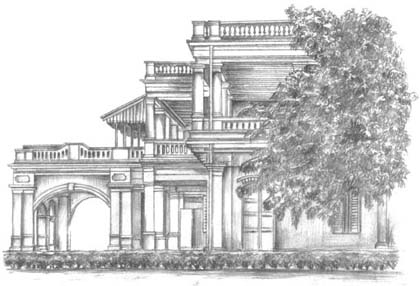
Sri Bagh
103, Luz Church Road, Mylapore |
Sri Bagh was the residence of P.R. Sundara Iyer (1863-1913), one of the earliest Indians to make a name for himself as a lawyer and become a judge of the Madras High Court. He was the founder of several institutions that still survive in Madras, such as the Ranade Library and the Mylapore Club. Sundara Iyer’s house was built in the garden house style with a large porte cochere, ornamental balustrades, high ceilings and marble floors. A number of windows let in plenty of air into this two-storeyed bungalow whose ceiling has the typical Madras terrace supported by rafters, a forgotten technology today. There are ten entrances to the house, each of which once had a painting of one of Vishnu’s ten avatars. After Sundara Iyer’s death, his sons had to sell the property owing to business losses.
The property was purchased by ‘Desoddharaka’ Kasinathuni Nageswara Rao (1867-1938), freedom fighter, writer and creator of the Amrutanjan balm which is popular even today. He was also the first to start a Telugu newspaper, the Andhra Patrika which is still being published. Nageswara Rao built the Amrutanjan offices on the Sri Bagh grounds. In his time, the house was a venue for nationalist meetings and it was here that the famous Sri Bagh Agreement was signed, which eventually saw the formation of a separate Andhra State. Sri Bagh is today an empty shell and its eventual fate is unknown. Aratha Kuttai, the lake that adjoined Sri Bagh, is now Nageswara Rao Park. (Courtesy: Kalam Kriya.)
|